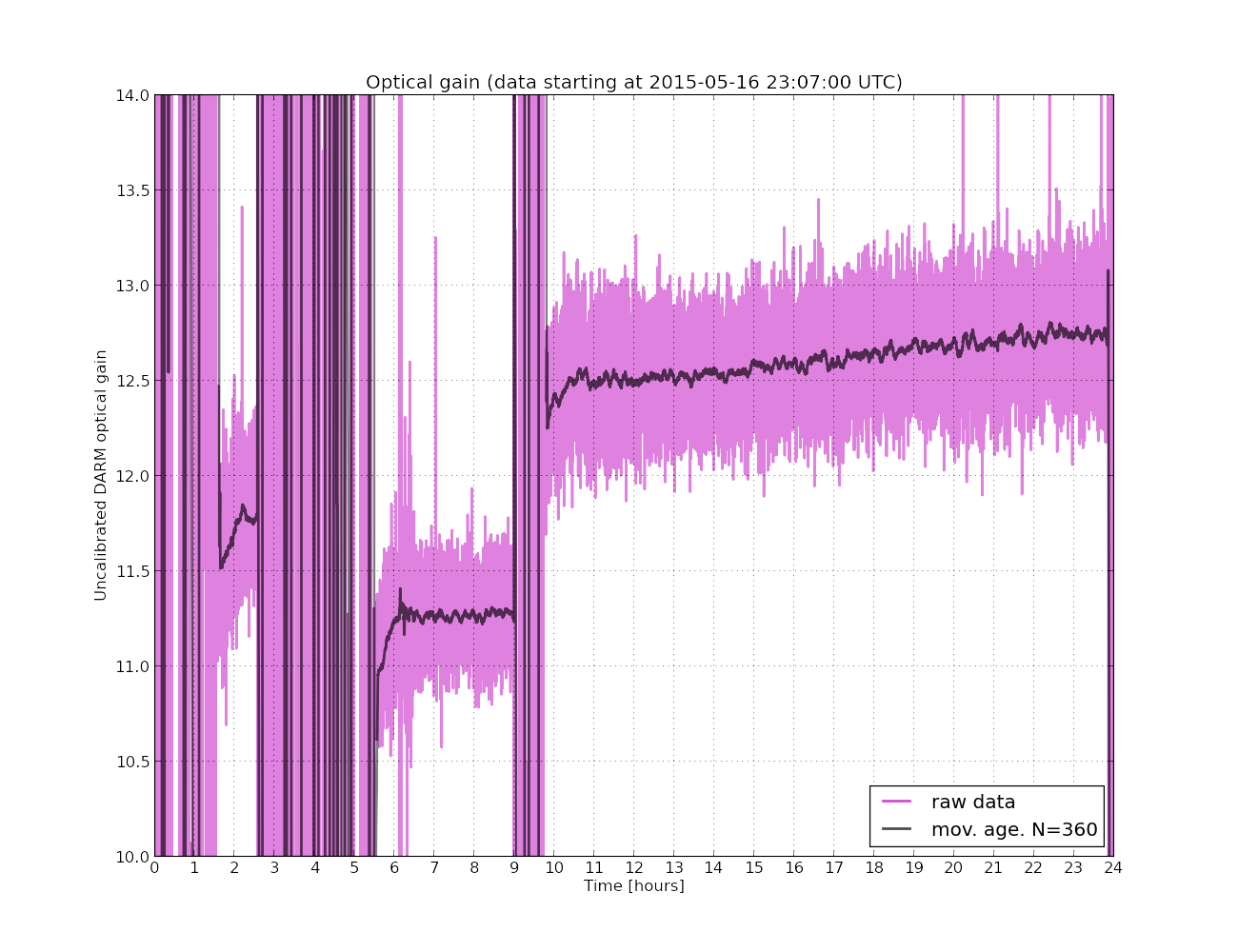Summary: Coupling of ambient sound is predicted to approach the DARM noise floor below 100 Hz and in the ISI-transmission bands of 350-550 and 850-1000 Hz. Twice the ambient vibration level causes a peak to appear in DARM in the 850-1000 Hz band. At several times background, injections produce nonlinear intermodulation effects, possibly with the OMC length dither, causing DARM peaks in the 100-200 Hz region and at much higher frequencies. The coupling in the 850-1000 Hz band depends on table motion, not vacuum enclosure motion.
I began studying acoustic coupling in the LVEA using the standard iLIGO LVEA injection (speaker in the X-arm of the LVEA, far from interferometer parts except the ITMX optical lever) and immediately noticed strong features in the 850-1000 Hz ISI-resonance band that suggested up-conversion. I then began injecting in narrow bands to study coupling; Figure 1 shows the up and down conversion produced by injections in the 850-1000 Hz band. The 500-700 Hz injection in blue produced only features in that band of DARM. But the red injection, 850-1000 Hz produced features in DARM near 100 Hz and in the region of the first harmonic around 1800, in the region around 2400 Hz, and near 4200 Hz.
Predicted noise from acoustic background
Figure 2 shows the estimated noise floor for ambient acoustic levels. It relies on the assumption of linearity, that is, that 10x the ambient sound will produce 10x the effect in DARM. Linearity is clearly not met in the 850-1000 Hz band. However, Figure 2 is made from 6 narrow injection bands (such as in Figure 1), at 10 to 100 times background sound pressure levels, and, except for the 850-1000 Hz band, none of the other bands showed evidence of non-linear coupling. The predicted ambient noise level for the 850-1000 Hz band is better estimated for the shaker injections below. The predicted ambient points have a wide spread mainly because the microphone is not exactly at the coupling site and, for example, at certain frequencies, the microphone may be at a node or antinode while the coupling site is not. More focused coupling measurements can be more precise. All LVEA beam diverters were closed for acoustic injections except the REFL port.
Figure 2 shows three bands where the predicted ambient noise approaches the noise floor: below 100 Hz, in the 350-550 Hz band, and the 800-1000 Hz band. The later two are familiar ISI transmission bands, which suggest that the coupling is at HAMs. I have not yet measured acoustic coupling at higher frequencies than 1100 Hz because I was not able to make the sound loud enough over a wide band (generally the coupling is low), but it is likely that there is significant coupling at specific higher frequencies because it was observed in shaker injections at HAM6.
Shaking at HAM6 (which excites only locally in contrast with the previous acoustic injections) confirmed that coupling at HAM6 could account for the acoustic coupling in the 850-1000 Hz band, though it doesn’t eliminate the possibility that there is comparable coupling at other sites. To make these HAM6 measurements I mounted a shaker on a blanked off door port and another on a blue cross beam.
DARM amplitude depends on table motion not vacuum enclosure motion
I compared the response of DARM for shaking of the vacuum enclosure (which is a candidate reflector of scattered light), and for shaking of the blue cross beam, which doesn’t shake the vacuum enclosure much but does couple well to table vibrations. Figure 3 shows that, in order to produce a peak in DARM as large as the one I produced by shaking the blue cross beam, I had to shake the vacuum enclosure so that it moved ten times as much as it moved during the cross beam injection. While the enclosure motion varied by 10, the table motion indicated by the GS13 signal was about the same for both injections. This suggests that , in the 850-1000 Hz band, the important motion is the table motion not the vacuum enclosure motion.
Increasing HAM6 table motion to twice ambient produces features in DARM
Figure 4 shows that increases in table motion of two times ambient background (black = ambient), in the 700-900 Hz band, produce features visible in DARM, and non-linear effects become obvious at 5-10 times ambient.
Non linear effects in DARM at higher frequencies and the OMC length dither
Shaker injections at higher frequencies also make peaks, e.g. a 2875 injection produces a peak in DARM at that frequency and another peak at 1220. To demonstrate the nonlinear effects, I injected a slowly swept sine with a shaker on a blue cross beam, and made a video of the DARM spectrum: http://youtu.be/t6zlUlckuEI I apologize for shooting video of the control room screen; we don’t yet have software that makes a movie from sequential screen shots, though it is available and might be useful for operator training videos as well as projects like this.
It is hard to imagine mechanical nonlinearities that could account for these observations, but if the excited motion modulated the beam, I could imagine intermodulations. One possibility, based on the video, is that mechanical oscillations that modulate the beam could be intermodulating with the OMC length dither. Notice in the video that upward and downward travelling peaks are centered on the peak at 4100 Hz (or its sub-harmonic at 2050). The 4100 Hz peak is from the OMC length dither.
Robert

































